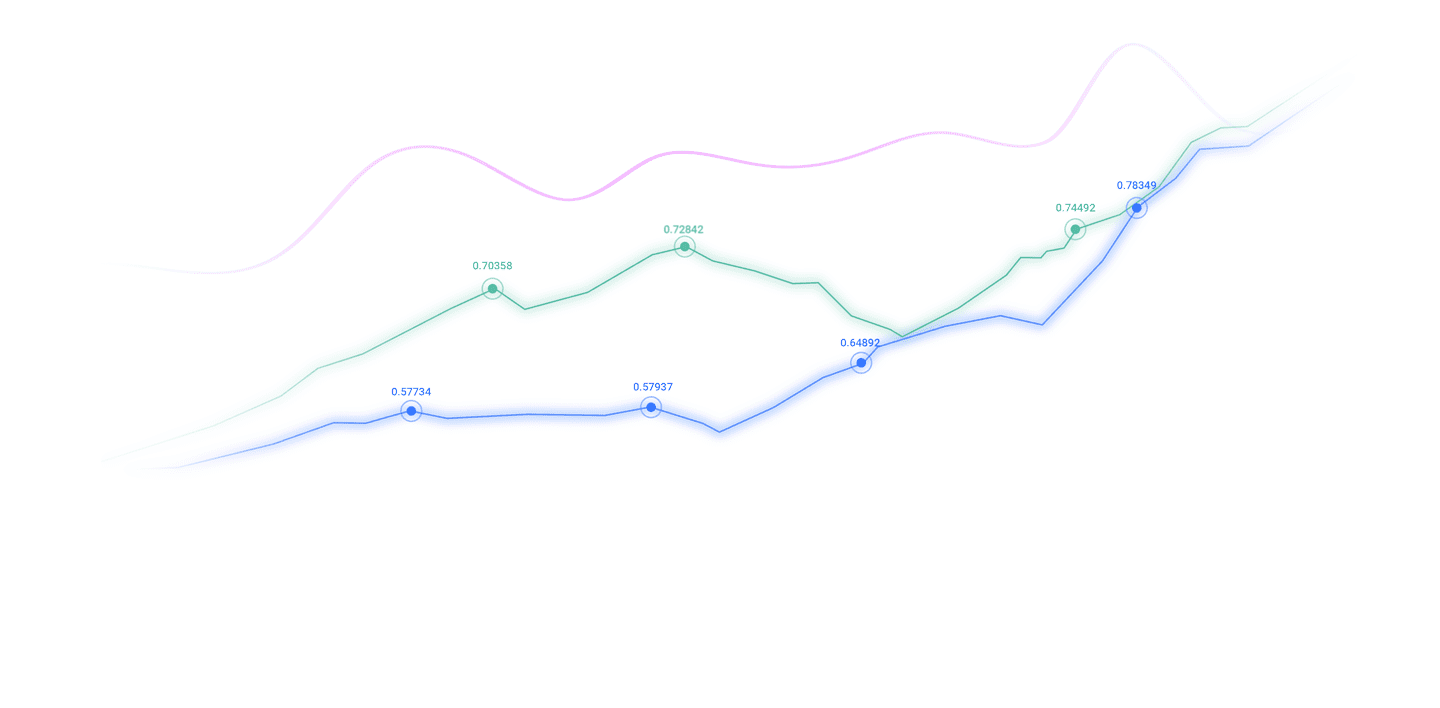Trusted by over 15 Million Traders
The Most Awarded Broker
for a Reason
CATEGORIES
News
- The GBP USD technology has shown a "golden cross" and is wary of breaking throug
- Gold falls will not change the bull market, but beware
- US dollar index weakens, US CPI and GDP of many countries will join hands with "
- 7.24 Gold surges and falls and turns symmetrical long and short profits, and the
- The bears cannot catch up at $60 for a long time, and WTI may change its trading
market analysis
The bond market releases key signals as investors collectively bet on a "job recession"
Wonderful introduction:
A secluded path, with its twists and turns, will always arouse a refreshing yearning; a huge wave will make a thrilling sound when the tide rises and falls; a story, regretful and sad, only has the desolation of the heart; a life, with ups and downs, becomes shockingly heroic.
Hello everyone, today XM Forex will bring you "[XM Forex Platform]: The bond market releases key signals, investors collectively bet on "employment recession"". Hope this helps you! The original content is as follows:
The continued decline in U.S. bond yields seems to indicate that investors have accurately captured the policy signal released by Federal Reserve Chairman Powell - in the current monetary policy decision-making balance, the weight of employment conditions has significantly exceeded inflation.
Although U.S. stocks have hit new highs, credit spreads have continued to narrow, and inflation remains high, U.S. bond yields have fallen instead of rising. This seemingly contradictory market performance reflects the emerging consensus among investors that concerns about the labor market are dominating the direction of monetary policy.
This consensus could trigger a self-reinforcing feedback loop - job market worries drive down yields, and falling yields in turn exacerbate worries about an economic slowdown, which in turn puts continued downward pressure on yields. Under this cyclical mechanism, any negative news about the job market may be amplified, leading to increased market volatility.
The bond market reacted coldly to the inflation data
The U.S. government shutdown entered its 23rd day on Thursday (October 23). The Senate has rejected temporary appropriation resolutions 12 times, and the political deadlock still shows no signs of easing. During the shutdown, official economic data was www.xmh100.completely missing, making the Consumer Price Index (CPI) to be released this Friday the focus of market attention. However, this much-anticipated data may not provide the information investors really need.
The market expects that the core inflation rate will remain at 3.1% in September, which is more than one percentage point higher than the Federal Reserve’s 2% inflation target. It is worth noting that in the past five years, the year-on-year growth rate of core CPI has stood at a high of 3% or above almost every month.
However, the bond market may react tepidly. twoThe 1-year U.S. Treasury yield fell last week to its lowest level since August 2022, reflecting market expectations that the Federal Reserve will continue to cut interest rates at next week's meeting, in December and next year.
Concerns about the job market have emerged
The 10-year U.S. Treasury yield has also fallen below the 4% mark, hitting its lowest closing level in more than a year on Tuesday. These signs suggest that even if inflation data exceeds expectations, it will be difficult to reverse the downward trend in yields. The technical performance of the bond market shows that investors have formed relatively consistent pessimistic expectations about the future economic prospects.
With the government shutdown and the absence of official data, investors can only rely on their own judgment of the economic outlook to fill the information vacuum. What worries the market the most is the sharp slowdown in employment growth. While the sharp deceleration in job growth has so far been largely offset by contraction in labor supply, the trend remains troubling.
Goldman Sachs economists this week systematically elaborated on the five major causes of the rapid contraction of employment growth: slowing immigration inflows, reductions in government hiring and funding, popularization of artificial intelligence technology applications, rising tariff costs and trade uncertainty, and intensifying macroeconomic growth risks. According to its calculations, the current potential trend employment growth has dropped to only 25,000 people per month, which is a significant decrease of about 125,000 people from the January forecast.
This number is also well below the "breakeven" level needed to keep the unemployment rate stable - Goldman Sachs estimates it is about 75,000 per month. It is worth noting that this is only the upper edge of the equilibrium estimate range. Dallas Fed economist Anton Cheremukhin's estimate is more conservative, putting the equilibrium level at only about 30,000 people, well below the estimate of about 250,000 two years ago.
The vulnerability of the labor market has increased
The key to the problem is that although a lower equilibrium level of employment growth helps restrain the unemployment rate from rising too quickly, it also masks the inherent vulnerability of the labor market. In this tight situation, any small negative shock could turn already weak net employment growth into negative territory. This vulnerability makes the labor market significantly less resilient to external shocks.
The Fed is clearly aware of this risk. Chairman Powell made it clear last month that although inflation remained above the 2% target, concerns about a rapidly deteriorating labor market prompted the Fed's decision to restart its rate-cutting cycle. This statement marks an important change in the Fed's policy framework. The stability of the job market has become a higher priority policy goal than inflation control.
Oil price trends provide additional evidence
In addition, the Federal Reserve and investors may have other reasons to remain "turn a blind eye" to the still high inflation rate. The signal sent by the oil market is one of them. Although the correlation between crude oil prices and inflation is no longer what it used to be, its indicative role cannot be ignored. Oil prices are currently oscillating around a five-month low ($60.05/barrel), with Brent crude oil priced at about $65.10 a barrel, down about 15% from the same period last year.
Including the International Energy AgencyMost energy analysts, including the International Energy Agency (IEA), predict that the crude oil market will continue to be in a supply-demand imbalance in the www.xmh100.coming year due to the dual pressures of increased supply and weak demand. Analysts at Eurasia Group even judged that by the end of this year, this surplus pattern may suppress oil prices to US$55 per barrel, a five-year low.
Moderate oil prices continued to put downward pressure on inflation throughout the year. While cheaper crude prices alone are not enough to return inflation to the 2% policy target, it is another key factor in explaining why the Fed and investors are shifting their focus from inflation to a shaky labor market. The continued weakening of oil prices has provided more operating space and theoretical basis for the Federal Reserve's policy shift.
The above content is all about "[XM Foreign Exchange Platform]: The bond market releases key signals, investors collectively bet on "employment recession"". It is carefully www.xmh100.compiled and edited by the editor of XM Foreign Exchange. I hope it will be helpful to your trading! Thanks for the support!
Due to the author's limited ability and time constraints, some contents in the article still need to be discussed and studied in depth. Therefore, in the future, the author will conduct extended research and discussion on the following issues:
Disclaimers: XM Group only provides execution services and access permissions for online trading platforms, and allows individuals to view and/or use the website or the content provided on the website, but has no intention of making any changes or extensions, nor will it change or extend its services and access permissions. All access and usage permissions will be subject to the following terms and conditions: (i) Terms and conditions; (ii) Risk warning; And (iii) a complete disclaimer. Please note that all information provided on the website is for general informational purposes only. In addition, the content of all XM online trading platforms does not constitute, and cannot be used for any unauthorized financial market trading invitations and/or invitations. Financial market transactions pose significant risks to your investment capital.
All materials published on online trading platforms are only intended for educational/informational purposes and do not include or should be considered for financial, investment tax, or trading related consulting and advice, or transaction price records, or any financial product or non invitation related trading offers or invitations.
All content provided by XM and third-party suppliers on this website, including opinions, news, research, analysis, prices, other information, and third-party website links, remains unchanged and is provided as general market commentary rather than investment advice. All materials published on online trading platforms are only for educational/informational purposes and do not include or should be considered as applicable to financial, investment tax, or trading related advice and recommendations, or transaction price records, or any financial product or non invitation related financial offers or invitations. Please ensure that you have read and fully understood the information on XM's non independent investment research tips and risk warnings. For more details, please click here


































































































